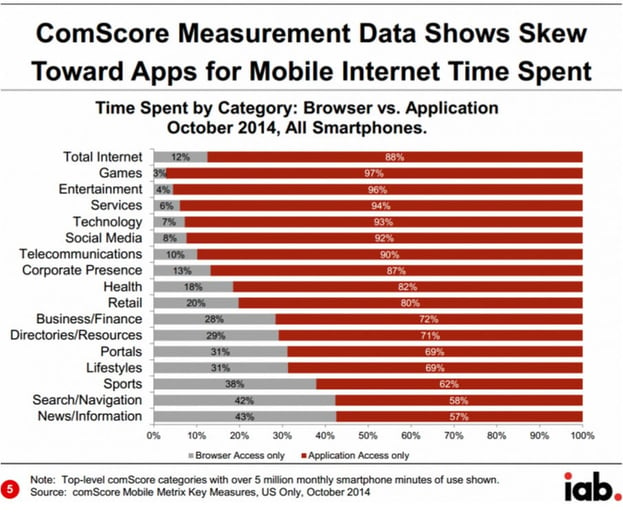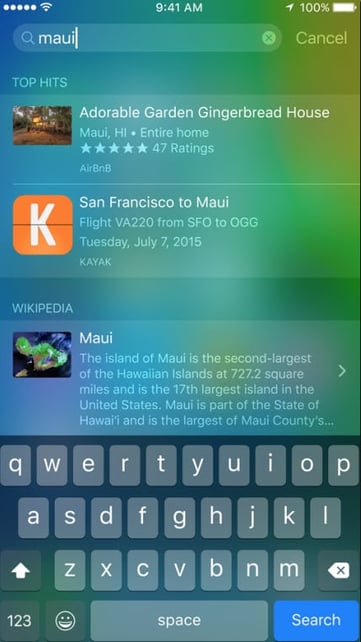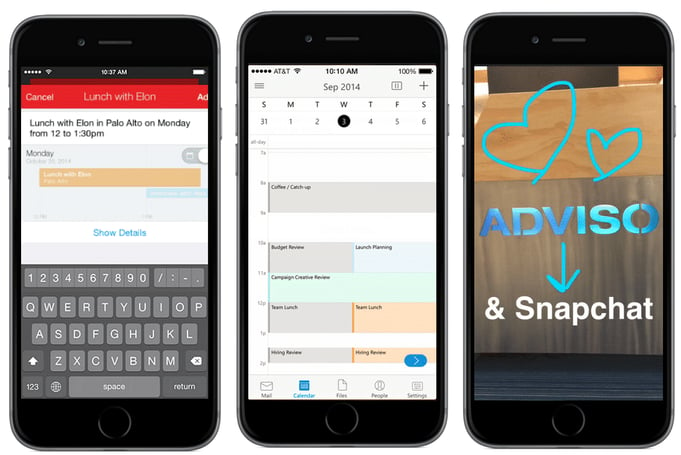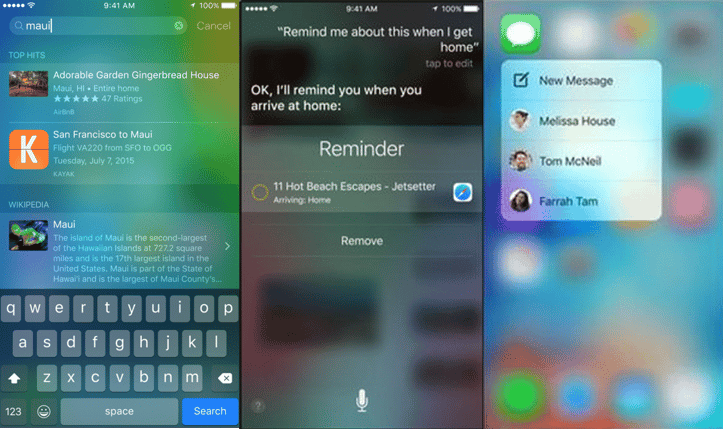iOS 9 signals the end of mobile applications
In parallel to smartphones, the rise of mobile application stores like Apple’s App Store and Google’s Play Store has been the biggest change in the technology sector in recent years.
As countless studies have shown, mobile applications are our point of entry of choice for accessing content and services. When it comes to checking our calendars, reading email, or making a note, we prefer to use a dedicated app than a browser.
And since switching from one app to another is only a minor inconvenience, users have been happy to use a single app to meet a single need. As a result, the objective for most apps was to become THE point of entry for a given category, and score a choice piece of real estate on consumers’ home screens.
And it’s exactly this order of thing that has been put in question by iOS 9.
Goodbye apps, hello services
Whether it’s through the proactive assistant or deep linking, iOS9’s new functionalities allow iPhone users to directly access the content they’re looking for regardless of where it originates, and perform actions without ever opening an app.
This change might seem minor, but it’s important. Up to now, developers adopted a number of strategies to differentiate themselves from the competition:
- Do one thing really well, but differently (like Fantastical by allowing users to enter data using natural language)
- Group different functionalities in a single application (like Outlook, by bringing together your calendar, documents, contacts, and email)
- Offer a specific experience based on exclusive content (like SnapChat with its Snaps, or AirBnB with its apartments)
The goal was to become the preferred entry point for a given category, but these strategies are now weakened by the fact that:
- The new universal search functionality links directly to in-app content
- Siri can perform a set of actions on command: create a reminder, send a text, display the score of a sports game, etc.
- 3D Touch allows you to perform certain actions at the system level, rather than through an app (looking at a map, adding an event to your calendar, etc.)
(Google Now on Tap, which allows users to interact with in-app content, offers the same sort of functionality to Android users.)
The result is that companies can no longer aim to be the app of choice on users’ home screens: they now have to aim to be the service of choice. For example, the superior experience offered by a particular restaurant review app doesn’t do the app developers much good if the operating system offers suggestions from four different apps. However, if the suggestions offered by the app are highly personalized, the user might choose them regardless of their point of entry.
Optimising the customer experience
The best relationships are those where all parties win: the customer/company relationship is no different. Yet it’s still common to see companies claiming to be working for their customer, but trying to stack the situation in their favour by using tactics like bundling or locking customers in.
Universal search, smart suggestions from the proactive assistant, app extensions (which allow for system-wide functionalities), and now Quick Actions are shattering apps’ traditional boundaries and allowing consumers to access content and functionalities directly.
If they are going to properly meet consumers’ needs, companies will have to adopt the same change in perspective. Rather than trying to optimize the in-app experience, they will need to find ways to understand the different paths users take, then identify and support the actions they want to perform, creating content that’s discoverable from multiple points.
In short, instead of trying to keep users in the controlled environment of an app, we need to find ways to multiply interactions that offer real value to our users.
This requires giving up a certain measure of control, but if we can correctly identify the value we can bring to customers, the risk is minimal. For example, I might want to take a photo with VSCO, but apply a filter from Instagram. Instagram could make this functionality possible by means of an app extension. And since Instagram knows that the true value they offer their customers is not in the filters or photo formats, but in its community and content, it can be confident that its users won’t stop sharing content on its service.
And so the question is: what is the service you provide? What value do you offer your customers? What paths do they take? And if you don’t know the answers to these questions, do you have the tools to find out?
This is no small question. Your competition could discover the answer first, and take control of the action rather than simply the screen space on thousands of users’ home screens, a bit the way Google has become synonymous with online search.








